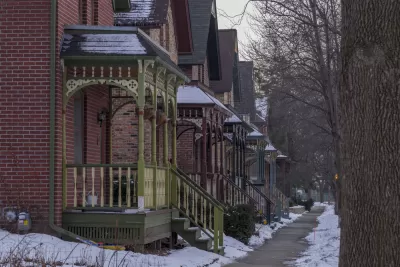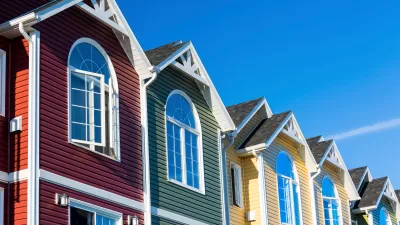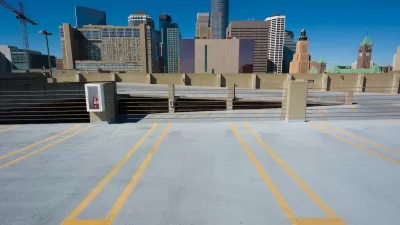The Federal Reserve Bank of Minneapolis has noticed an alarming spike in investor-owned homes in Minneapolis since the Great Recession.

The Federal Reserve Bank of Minneapolis has started monitoring a disturbing trend, writes Joy Wiltermuth: "an explosion of investor-owned homes" in high-poverty neighborhoods. According to a Minneapolis Fed report, the rate of investor-owned homes rose sharply after the Great Recession, with a growing number of 'very large' investors—those who own 50 or more properties—snapping up foreclosed homes. The trend accelerated during the COVID-19 pandemic as some homeowners were forced to sell or fell into foreclosure.
"One concern is that deep-pocketed investors 'make it harder for families, particularly lower-income households who are more likely to be people of color, to compete in the home-buying process,' according to the report." In Northeast Minneapolis, where the poverty rate is 41.7 percent, investors own close to a third of residential properties. The report also cites concerns that increased ownership by absentee investors who provide little maintenance will lead to the deterioration of housing stock and poor conditions for tenants.

Trump Administration Could Effectively End Housing Voucher Program
Federal officials are eyeing major cuts to the Section 8 program that helps millions of low-income households pay rent.

Planetizen Federal Action Tracker
A weekly monitor of how Trump’s orders and actions are impacting planners and planning in America.

Ken Jennings Launches Transit Web Series
The Jeopardy champ wants you to ride public transit.

Rebuilding Smarter: How LA County Is Guiding Fire-Ravaged Communities Toward Resilience
Los Angeles County is leading a coordinated effort to help fire-impacted communities rebuild with resilience by providing recovery resources, promoting fire-wise design, and aligning reconstruction with broader sustainability and climate goals.

When Borders Blur: Regional Collaboration in Action
As regional challenges outgrow city boundaries, “When Borders Blur” explores how cross-jurisdictional collaboration can drive smarter, more resilient urban planning, sharing real-world lessons from thriving partnerships across North America.

Philadelphia Is Expanding its Network of Roundabouts
Roundabouts are widely shown to decrease traffic speed, reduce congestion, and improve efficiency.
Urban Design for Planners 1: Software Tools
This six-course series explores essential urban design concepts using open source software and equips planners with the tools they need to participate fully in the urban design process.
Planning for Universal Design
Learn the tools for implementing Universal Design in planning regulations.
Ada County Highway District
Clanton & Associates, Inc.
Jessamine County Fiscal Court
Institute for Housing and Urban Development Studies (IHS)
City of Grandview
Harvard GSD Executive Education
Toledo-Lucas County Plan Commissions
Salt Lake City
NYU Wagner Graduate School of Public Service





























